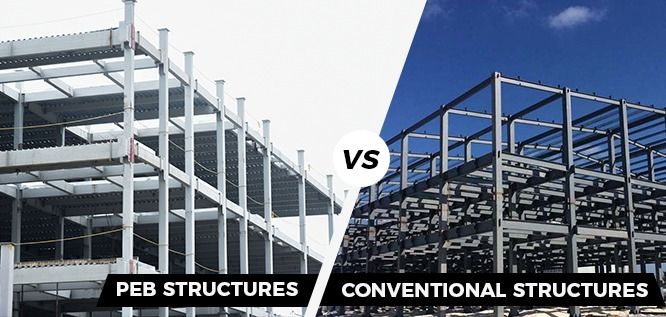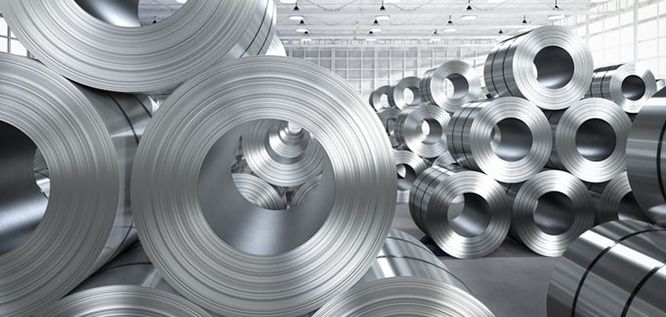In a fast-paced world, time is a precious commodity and is considered equivalent to money. It, therefore, comes as no surprise that the construction industry prefers pre-engineered buildings to traditional construction from scratch. You can choose from a wide range of pre-engineered buildings like columns, mezzanine floors, trusses, portals, multi-storey buildings, pre-engineered structures and more based on your specific requirements. Let us understand the difference between pre-engineered buildings and conventional structures in detail to better appreciate the popularity that PEBs enjoy.
What are Pre-engineered Buildings?
Pre-engineered buildings are prefabricated building parts that are produced in a factory and assembled directly on the construction site. These parts are customised to meet the client’s needs. Pre-engineered buildings are 30-35% lighter than conventional buildings which makes construction convenient.
What are Conventional steel buildings?
Conventional buildings are constructed using rolled steel sections that are designed and fabricated on-site. This is a long-drawn process involving more labour and time.
Let us compare Pre-engineered buildings with conventional structures on a few parameters.
Design – The integral framing system of pre-engineered buildings makes the design more efficient compared to conventional structures. It takes more time to design conventional structures to this level of accuracy.
Use of computer software – Computer software is available for designing pre-engineered buildings. Cost estimations along with detailing and drawings are generated instantly. This is not possible in the case of conventional structures.
Weight of final structure- In the case of PEBs, tapered built-up sections are used as structural members which makes them 10-20% lighter than conventional buildings. On the other hand in the case of conventional structures, hot-rolled T-sections are heavier.
Foundation – Since the entire structure is much lighter compared to conventional structures, a simple lightweight foundation will suffice. However, in case of conventional structures, a heavy foundation is needed to bear the weight of the structure.
Project execution time – Since PEBs are prefabricated structures that need to be bolted in place at the construction site, the execution of projects is much faster. A conventional structure takes a much longer time as the entire structure has to be constructed at the site. The difference could be as stark as 6-8 weeks for a 500MT PEB while the same project could take 26-28 weeks in the case of a conventional structure.
Construction Cost – Given that projects are executed much faster, it is obvious that PEBs require less labour which translates into less cost. Studies show that PEBs cost 30% less than conventional structures per sq m.
Earthquake Resistance – Since PEBs are lightweight, they offer more resistance against earthquakes compared to conventional structures.and their heavy frames.
Future changes- The simple linked design that can be bolted in place easily offers flexibility for addition or expansion in future. It would be difficult to expand conventional structures as the design is rigid and it would be difficult to add extensions unless already planned for.
Performance – Since the entire piece is pre-fabricated, it fits together efficiently as a structure. However, in the case of conventional structures, there is no guarantee about the efficacy as each piece is designed separately.
Single point of responsibility – The entire prefabricated structure can be purchased from a single vendor which gives you better execution and control. A conventional structure may be dependent on multiple suppliers and unplanned delays or lack of coordination can occur.
Clear span – PEBs offer a clear span of 100-120m which is 2.5-3x of what is offered by conventional structures.
Simple erection – The entire construction process is so simple and requires light machinery for bolting the structure into place. Conventional building involves the use of heavy machinery and it is a complicated process.
As you can see Pre-engineered buildings using structural steel are fast becoming the preferred option for architects and builders because of their cost-effectiveness, efficiency and speedy execution. APL Apollo has a wide range of structural steel offerings that are perfect for PEB structures. You can visit www.aplapollo.com and enquire now for complete details.







